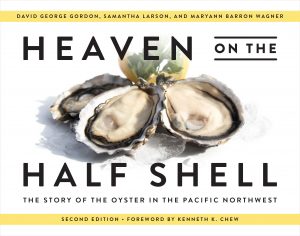The newly revised Seafood Direct Marketing Manual helps seafood harvesters dive into direct-to-consumer sales
From the Summer 2025 Sea Star
By Alison Lorenz, WSG Communications Project Coordinator
Starting a business is no easy feat — especially when you throw in the unpredictable nature of boat maintenance, weather, catches and wholesale prices. For many fishermen, selling their product directly to seafood consumers can be a way to regain some control in a notoriously volatile industry. But where does a fisherman who is interested ...
Read MoreFEB
 Generations of oyster farmers have weathered many challenges to continue the harvest. Their stories are braided together with significant history that have defined the modern-day Pacific Northwest: the arrival of white ...
Generations of oyster farmers have weathered many challenges to continue the harvest. Their stories are braided together with significant history that have defined the modern-day Pacific Northwest: the arrival of white ...